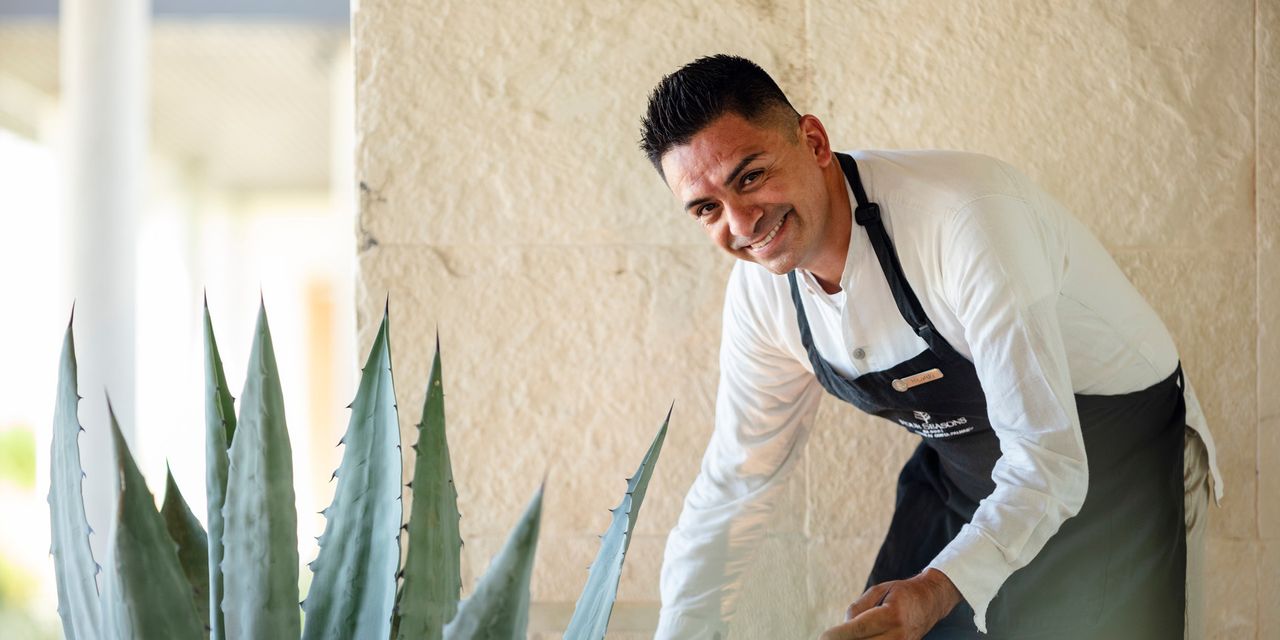Several years ago, Mexican-born Ricardo Robles completed a sommelier program only to discover he felt little connection with wine—an experience that led him to pursue a passion closer to home.
“There are no Mexican grapes,” says Robles, who turned his attention to agave. He fell in love with mezcal and went on to become one of around two-dozen agave masters in the world, serving that role at the Four Seasons Resort Los Cabos at Costa Palmas. He’s since met with agave producers in half of Mexico’s 32 states.
As it turns out, Robles was slightly ahead of the curve when it came to his passion for agave spirits.
“The last 20 years we have seen a huge demand for tequila and mezcal,” he says.
Mexican spirits are growing in global distinction—and that goes beyond mezcal or tequila. Grammy Award winner Lenny Kravitz recently launched Nocheluna Sotol, which retails for about US$76 a bottle and is derived from a plant in the Chihuahuan desert. Kravitz’s Nochulua Sotol comes from a “100% artisanal process that yields a dynamic liquid that can be enjoyed by all spirits lovers in a neat pour or in cocktails alike,” according to the brand’s website. “Sotol will be the next big thing,” says Eli Raffeld, a global spirits distributor. (Another purveyor called Sotol Mexico’s “other other spirit.”)
Meanwhile, U.S. sales of Mexico’s iconic spirit tequila have nearly doubled since 2020, and mezcal sales have increased 143%, according to NielsenIQ data. In other words, in many bars across the U.S., tequila and mezcal are now more popular than vodka.
How these agave spirits should be served, however, is a point of debate.
Robles advises against pairings mixed with fruit juice, salt, chili powder, saying they “destroy” the agave spirits flavors. “Food pairings,” he says, are “better and more effective.”
But at Gotham Bar and Grill in New York’s Greenwich Village, the No. 1 selling drink isn’t a gin and tonic, but the Beet Red, made with Don Fulano Blanco tequila and conceived by the restaurant’s bartender Eugenio Ochoa Rebolledo, says Bret Csencsitz, the restaurant’s general manager.
“A few years ago, no one in this country knew what mezcal was, but people are discovering how great, interesting and versatile Agave spirits can be. In my opinion, a classic cocktail can be improved with a tequila or mezcal. Look at a negroni—the mezcal negroni opened the door for a much younger negroni drinker,” says Daniel Mendoza, the executive chef at New York City-based Caliza, which recently launched a beverage program based on mezcal and small batch tequila.
At the Golden Swan, a French Mediterranean restaurant in the West Village, the best-selling drink at its cocktail bar, the Wallace Room, is the Golden Swan Martini—but not one made with gin or vodka. The Golden Swan’s interpretation: a US$23 blend of mezcal, pineapple, and chili. The Wallace Room also features a negroni made with mezcal, red bitter, artichoke, and amaro. Bar Bastion, in Midtown, serves a bittersweet spin on the negroni using chocolate bitters and coffee-infused mezcal, along with a drink comprising saffron-infused gin and mezcal.
Mezcal Campante, an artisanal agave spirits brand, has seen a dramatic increase in sales in the U.S. across the board, according to the company’s co-founder Shirley Leigh-Wood Oakes. “There is a completely new consumer coming into the category and driving the growing interest in mezcal. Most of these consumers are migrating over from tequila, but we do see gin and whisky drinkers exploring spirits, too,” she says.
Even with the expanding market and changing palettes, Raffeld, the distributor of global spirits, opined in an interview last year that mezcal “still hasn’t gone over into the mainstream” and there is still “a large lane” for it. Meaning that lesser-known mezcal variants—like bacanora, which is traditionally less smoky, and raicilla, made from two varieties of agave that typically has a sweeter flavor—have yet to be fully discovered.
Other artisanal Mexican spirits have entered the scene, says Rachel Purcha, head bartender at Bar Bastion in New York’s Midtown East. “Social media has played a part in showing Mexican drinks such as pulque, an agave spirit, or how to make your own tepache from fermented pineapple skins at home.” People have realized that Mexican cocktail culture is more than just palomas and margaritas,” she says.
Read the full article here




